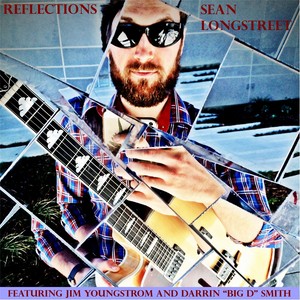
- 歌曲
- 时长
简介
As a long time fan of jazz on vinyl, I've always been interested in recording methinks of that genera from the 50's. Those vinyl records have such beautiful and unique sounds that it defines the era itself. I do realize that most of the sound of that time came from the vinyl media. But, the question still remained…with all the technology at our disposal, why are sales of jazz music still declining? The concept for this album came to me while reviewing the CD's sent to by other artists, publicists, and labels. After and during my years at Playboy, some publicists and labels trusted my opinion on their material and also wanted me for press via podcasting, blogging, and radio play. Although the process of listening to so many artists can be overwhelming, it was a good four year course in contemporary jazz that continues to this day. Some of the recordings sound more like 1970's album rock than like the intimate setting of a live jazz performance. The idea was simple…produce a jazz album that has the sound and feel of a vintage recording, but tailor it to the technology for our time. Simple, right? Well, if it was so simple, the task should have taken us less time than the 14 months of work it took to complete. Step One: Find the best musician who will work with you. I approached Sean Longstreet about developing this project and he was enthusiastic about the concept. It was then that I brought Jim Youngstrom from the Brian Setzer Orchestra to work with Sean. The creative match was far better than expected and is evident in Mike Amorelli's documentary, "Is Jazz Dead?". Within months, we had all new material for an album. Including, a piece called "Short Night," composed by Jim Youngstrom, just for this album. The collaboration between musicians, production staff, and composers are all apparent in the recordings. It truly became a musical journey that will mark a new era in jazz. Step Two: Create the right atmosphere and recording techniques. I wanted all the musicians in the same room, playing together as a unit. No overdubbing. No direct bass. This was a jazz, not album rock. It had to be intimate. How to get each musician's part without isolating them behind sound walls? Well, the reality was, each musician's sound IS going to bleed into another's mic. But, what's wrong with that? We were not overdubbing or fixing a musician's poor performance. It was feet to the fire and called on their best musicianship. Next, we brought on Darrin "Big D" Smith to play baritone sax. Special recording techniques were developed to bring out the such low end of the bass and Big D's baritone sax. The obvious answer was "space." The rich low tones on most 50's recordings came from using sound stages and large rooms with large ribbon mics. But, this just wasn't an option for us. We needed to keep it intimate, even if the techniques were not simple. I f eel the results speak for themselves. Very little post production was used to enhance the audio. But, I was not going to let go of that option! If we needed to "nudge," we nudged! We had to put out a quality product. A good example of this is on "Her Eyes," it was only the second time the musicians had seen the music and played it. It was that track that I used on the recording. The reasons are far reaching, however they were not prepared to take a recording track, it was only rehearsal. We spent two days cleaning up the track from everything from people bumping into music stands to amplifiers humming. But the recording you hear on the album is the second time it has been played and it is the most honest representation of the music. Tim Flores, Producer




